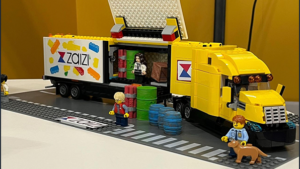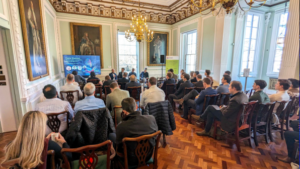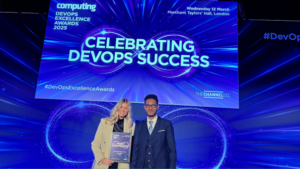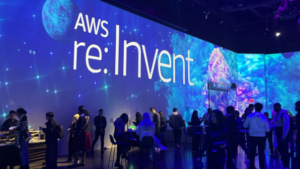Has Oxfam Got It Right?
Zaizi and Alfresco held an event with Oxfam on how they built and manage its Global Intranet. Veronica Jason from Databilia came along to the event to find out more…
As a lifelong supporter of this remarkable charitable organisation, I was happy to receive an invite from Alfresco and Zaizi to hear what they had to say about Oxfam International’s successful new global internet, connecting all of its 17 affiliate organisation working in approximately 90 countries worldwide, in order to find solutions to poverty and related injustice around the world.
Founded in Oxford in 1942, Oxfam is one of the best known and well respected of international agencies and Gabriele Sani, Intranet Manager of Oxfam International, had to find a solution within his constrained budget, not an easy task in these financially challenging times. He wanted to share with other charities what Oxfam had achieved.
The business challenge began over three years ago when Oxfam International identified a major opportunity to dramatically improve communications and knowledge sharing across its confederation by creating a single global intranet. By 2012 it became clear that improvements needed to be made. Many field workers in remote locations with low bandwidth found it difficult or impossible to access the systems. Even those with access to high-bandwidth found the systems too complicated to use on a regular basis, and when facing a humanitarian emergency there is no time for training.
Oxfam needed to provide a more user-friendly accessible communications platform for these processes. Gabriele Sani explained that he was concerned with price as well as scalability and functionality when evaluating content management platforms. The CMS needed to be integrated with a Drupal-based intranet that had 8,000 users in 90 countries, 700 different groups and roughly 120,000 Intranet pages.
All credit to him that he admitted he was concerned with “more than simply controlling software license fees, but ensuring that the costs of integrating and adapting the chosen platform to our diverse IT architecture would stay within budget as we scaled. The system also needed to be easy enough for our field workers around the world to learn by themselves, even with minimal training.”
What was the solution? After looking at many other alternatives, Oxfam International turned to open source systems integrator Zaizi to lead the development of a browser-based communications and collaborative application that integrated Alfresco’s CMS and Drupal’s web platform. A Belgian agency, Provonix, was also initially brought in to provide specialist Drupal integration support.
To support field workers in low band-width areas like most sub-Saharan countries, the system would deploy WebDAV, a tool that comes with Alfresco. WebDAV is an open standard that gives users a secure way to edit and manage files located in a shared site library as on their own computers. All the application data is hosted in the Cloud.
Sani found Zaizi on Alfresco’s website and found that the feedback on its services from existing customers was consistently excellent. He explained that Zaizi approached the project strategically by understanding their whole business and came up with the desired answers without pushing certain solutions on them first.
Zaizi’s integration strategy was to deploy Alfresco to mirror Drupal’s structure. There is an Alfresco folder to mirror the content in each of the 700 groups including HTML files that capture online content such as discussions, calendars and news. It allows a field worker to upload files to the web interface, which is automatically stored in Alfresco and made available via other protocols such as WebDAV or FTP (file transfer protocol.)
Sani reckons that there are several things that impressed him about the system: “user interface is good, It’s easy to try out new things, it’s cost effective”. He was also impressed with the overall governance. One member of the audience was also impressed, a representative of a Dutch based international agency that works on the empowerment of women among other things and needed to integrate, if possible, several very diverse areas with some 26 languages into one. I believe he found his solution by listening to what Oxfam had to say.
A word for the venue, the Institute of Directors in Pall Mall sits in a beautiful building and one of their meeting rooms was the perfect place, quiet and easy to access. Any visitors to this website may have already read that I am fully in agreement that all board members everywhere should dump the paperwork and go digital. I wonder if that will happen within the next couple of years?
I’m always interested in case histories and reports, white papers and the like, as they explain what can be accomplished in so many areas of what business (and charities) can achieve. It’s even better when you can hear the case in person. Carlos Miguel from Zaizi gave his useful take, laced with humour, on how systems get started and then become adopted. Ian Norton gave us a live demo of how he achieved his end of the business for Alfresco. All interesting and I look forward to the next.
Originally published on Databilia
Latest content
-

From ScanApp to Lego demos — What you need to know about Security & Policing 2025
Published on: 1 April, 2025 -

Truth, trust and transformation — 4 key takeaways from Zaizi’s AI in government event
Published on: 14 March, 2025 -

Zaizi talent shines at Computing DevOps Excellence Awards 2025
Published on: 13 March, 2025 -

Advancing DevOps practices with AI —lessons from AWS re:Invent
Published on: 10 March, 2025
